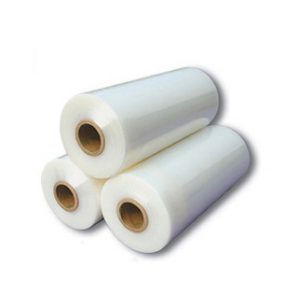
Tail therapy
If our on-demand webinar has been seen by you, then, “what’s the best way to stretch it?” “You’re already familiar with the importance of dealing with the negative side of the movie.” In short, if they are dragged down, the quality and safety issues are represented by them. Pallet packaging usually provides a set of standard and optional solutions to ensure that the tail load can be ensured. For most of the tray, inside the trailer, there is a kind of effective and consistent solutions, also can load on them, and (assuming that there are some sticky stuff) in the film so that the effect is very good.
However, building products often lead to another set of movie tail challenges. The impact of the cross wind and trailer movement, even if the tail of the stretching film is the most skilled, will soon begin to fall off. This makes a more robust solution is needed — using an optional heat sealing device is generally the answer, the purpose is to make the back of the film there is a lot of building products can be ensured.
Let’s take a look at water and water conservation.
Transportation and storage are exposed – both in wood yards and in the workplace – meaning that building products are often exposed to elements. We protect the integrity of the load by protecting the film against the deterioration of uv radiation. However, an important consideration is to protect the product from water and moisture.
In fact, it can be simple, compared with the plastic of roof and floor board, have the same place – if we want to prevent the top of the precipitation was wet and protection at the bottom of the water, you need through a wooden tray. However, sometimes it requires more, and a common solution is to integrate two wrappers together as a common solution. First, we need a ring to wrap the product horizontally because it passes through a rotating stretch membrane. Top, bottom and sides are included. Next, what we need to do is pass the load to a traditional wrapper, which is wrapped up and needs to be vertical — all four edges need to be covered.
If our on-demand webinar has been seen by you, then, “what’s the best way to stretch it?” “You’re already familiar with the importance of dealing with the negative side of the movie.” In short, if they are dragged down, the quality and safety issues are represented by them. Pallet packaging usually provides a set of standard and optional solutions to ensure that the tail load can be ensured. For most of the tray, inside the trailer, there is a kind of effective and consistent solutions, also can load on them, and (assuming that there are some sticky stuff) in the film so that the effect is very good.
However, building products often lead to another set of movie tail challenges. The impact of the cross wind and trailer movement, even if the tail of the stretching film is the most skilled, will soon begin to fall off. This makes a more robust solution is needed — using an optional heat sealing device is generally the answer, the purpose is to make the back of the film there is a lot of building products can be ensured.
Let’s take a look at water and water conservation.
Transportation and storage are exposed – both in wood yards and in the workplace – meaning that building products are often exposed to elements. We protect the integrity of the load by protecting the film against the deterioration of uv radiation. However, an important consideration is to protect the product from water and moisture.
In fact, it can be simple, compared with the plastic of roof and floor board, have the same place – if we want to prevent the top of the precipitation was wet and protection at the bottom of the water, you need through a wooden tray. However, sometimes it requires more, and a common solution is to integrate two wrappers together as a common solution. First, we need a ring to wrap the product horizontally because it passes through a rotating stretch membrane. Top, bottom and sides are included. Next, what we need to do is pass the load to a traditional wrapper, which is wrapped up and needs to be vertical — all four edges need to be covered.